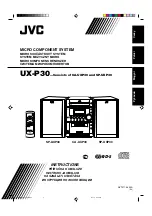
Overview of the Cisco WMIC
Understanding the Cisco Mobile Wireless Network
6
Cisco 3200 Series Wireless MIC Software Configuration Guide
4.
The AAA server authenticates the workgroup bridge. A Unicast Wired Equivalent Privacy (WEP)
key is generated and sent back to the root device.
5.
The root device sends out the Broadcast WEP key, encrypted with the Unicast WEP key, to the
workgroup bridge.
6.
The root device and the workgroup bridge activate WEP, using the Unicast and Broadcast WEP keys
for transmission. Once there is a Layer 2 connection, the Layer 3 setup begins.
7.
The WMIC sends a link-up notification to the Cisco 3200 Series router after it has associated
successfully to a root device. In response to the link-up notification, the Cisco 3200 Series router
sends four solicitations for a foreign agent.
8.
A foreign agent responds to the Cisco 3200 Series router solicitation with an advertisement that
includes its care-of-address (CoA).
9.
The Cisco 3200 Series router sends a registration request to the home agent through this foreign
agent.
10.
The home agent checks authentication, adds the Cisco 3200 Series router to its binding and routing
table, and sends a reply to the Cisco 3200 Series router that the registration is successful.
Data Flow to and from the Home Network
The Cisco 3200 Series router is registered to its home agent using the foreign agent CoA. If any devices
attached to the Cisco 3200 Series router must communicate with nodes on the home network, they send
the data to the Cisco 3200 Series router.
1.
The Cisco 3200 Series router encrypts the data. The endpoint of the IPSec tunnel is the VPN
gateway behind the home agent at the core network.
2.
The data is encapsulated in the MoIP tunnel. The endpoint of the MoIP tunnel is the home agent at
the core network.
3.
The data is forwarded to the foreign agent, where a second encapsulation takes place. The endpoint
is again the home agent at the core network.
4.
The data is sent through the network to the home agent where the packet is deencapsulated and sent
to the VPN gateway.
5.
The data is decrypted at the VPN gateway and forwarded to the destination network of the
corresponding node.
Data intended for the Cisco 3200 Series router mobile network from anywhere in the network must be
sent through the VPN gateway for encryption, and then sent to the home agent for encapsulation.
1.
Encapsulated data is sent to the foreign agent, where it is deencapsulated once and forwarded to the
Cisco 3200 Series router.
2.
The Cisco 3200 Series router does a final de-encapsulation at the end of the MoIP tunnel and
decryption at the end of the IPSec tunnel, and forwards the data to the target node in its mobile
network.
If the mobile vehicle is not in the vicinity of a wireless LAN hot spot, the vehicle uses a backup wireless
service, such as cellular, to deliver the data. In this case, the Cisco 3200 Series router acquires a dynamic
collocated care-of address (CCoA) address from the service provider network and the Cisco 3200 Series
router registers with the home agent.
The registration process is similar to the process for CoA registration. The encapsulation and encryption
process is also similar.
















































